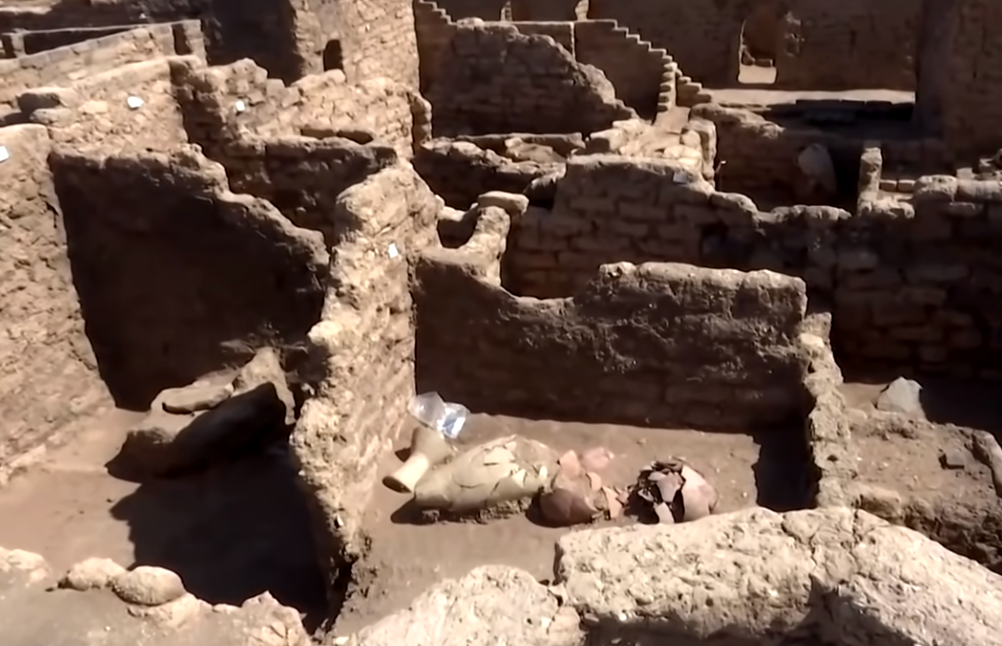One of the most profound discoveries in recent times is the “Lost Golden City”, discovered in Egypt. The remains were found in Egypt by archeologists declared to be the largest ancient city found in the entire country. The “Lost Golden City” had been sleeping within Luxor for over three thousand years buried under sand near the Nile River and the famous valley of the three kings. One of the most popular and visited spots ever. All the secrets that this city holds are still for the most part a mystery yet to be unraveled though some parts of it have been interpreted. However, before this Luxor was already popular for having most of the oldest cities in Egypt, Cities that have played important roles over the course of history. Home to the most powerful pharaohs.
Zahi Hawass, an Egyptologist, primarily announced this discovery. The remains of this lost city date back to the reign of Amenhotep III, which started almost at 1390 BC and continued to Tutankhamun according to the team of experts who were a big part of this big find. Batsy Bryan, a professor at Johns Hopkins University on Egyptian art and archeology stated this as one of the biggest finds in the history of archeology history 2nd to the tomb of great Tutankhamun, another discovery almost a century old.
The “Lost Golden City” also known as the “The Rise of Aten” offers an insight into the lives of Egyptians at a time when it was at its peak. The entire empire was a lot wealthy back then. The most amazing thing about this is that most of the things are in very good condition respective to how they should have been.
One of the unusual finds here is the burial of two cows inside a room. Animal burials are a bit odd. Researchers are still trying to find out what is the reason behind this. In addition, there were a good number of tombs were uncovered as well.
The search for the lost city began in the September of 2020 near Luxor, south of Cairo almost 500 miles away. In the beginning, the team found the first signs of the city. After deep observation and a lot of effort, within 7 weeks or so, the team started uncovering the building including an oven and storages. Soon entire neighborhoods started to uncover themselves with houses made from bricks and entire rooms filled with tools along with well-designed pottery.
The announcement of this find was a follow-up to the news of moving the 22 royal mummies to the new Cairo museum paying tribute to the ancient heritage of Egypt. Including the bodies of Amenhotep III himself and his wife. It was broadcasted around the world live. The entire event was designed to attract tourists and to uplift the beauty of Egyptian culture, but unfortunately, the whole idea fell victim to the global pandemic caused by COVID-19.
According to the historical records, the entire place had almost # palaces that directly belonged to the great Amenhotep III himself alongside some of the administrative buildings and industrial centers. Almost all the mud bricks found, bared the seal of Amenhotep III.

Amenhotep III ruled this empire from the Euphrates River in Iraq and Syria. His reign lasted for almost four. This period consisted of a lot of grand monuments one of which is the famous Colossi of Memnon, the two statues at Luxor as a remnant of him and his dear wife.
Experts believe that the work site holds a lot of answers to questions long unanswered. Bryan thinks this may answer the great mystery behind why Amenhotep III’s son Akhenaten decided to move the entire capital to a new area when it was already under so much success. This also helps explain why Akhenaten changed his name and worshiped only the sun god Aten.
The lost city also hints at how the pharaoh’s controversial transformation took place. How he governed the people of Egypt.
This discovery of this city has certainly been a fascinating story. Enabling us to learn more about the culture of Egypt.
These excavations and all the objects recovered including the mummies, pottery, tools and pyramids themselves have been a key attraction to tourists for a very long time. People all over the world come here to see and this contributed a handsome figure to the economy of Egypt. An economy currently victim to the pandemic. Still, a curious group of people would visit them. However, at this rate, the industry will face a catastrophic downfall over the upcoming years without an alternative. In just three months, the tourism revenue was cut to $801 million.
Egypt has long been a land of mystery. Despite the long searches and so, a lot of discoveries were made. But, a good number of questions still remain unanswered.
